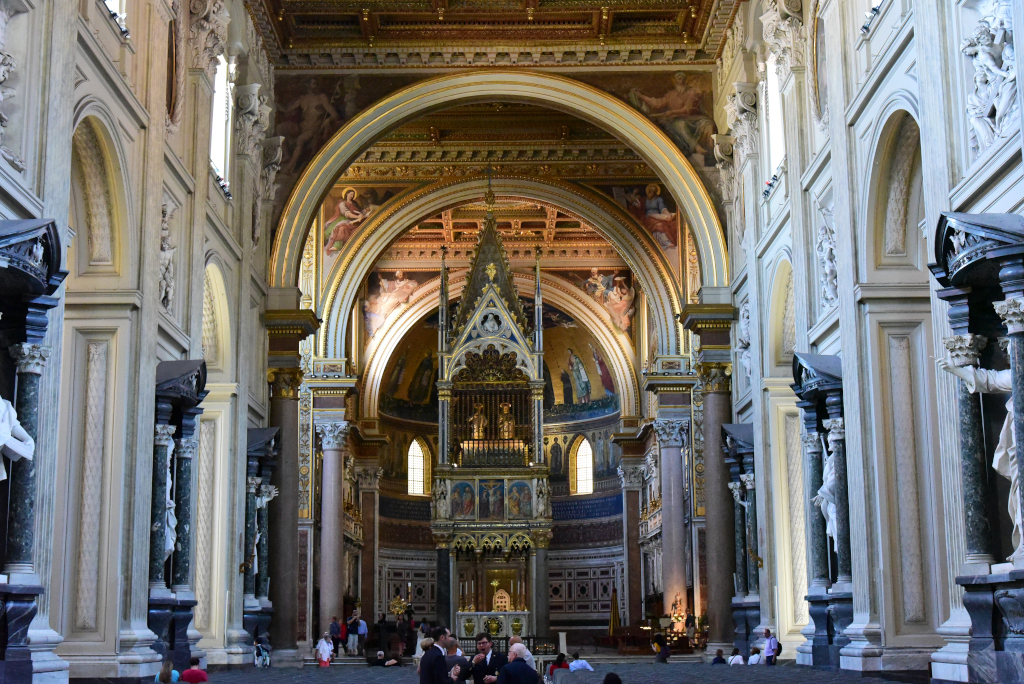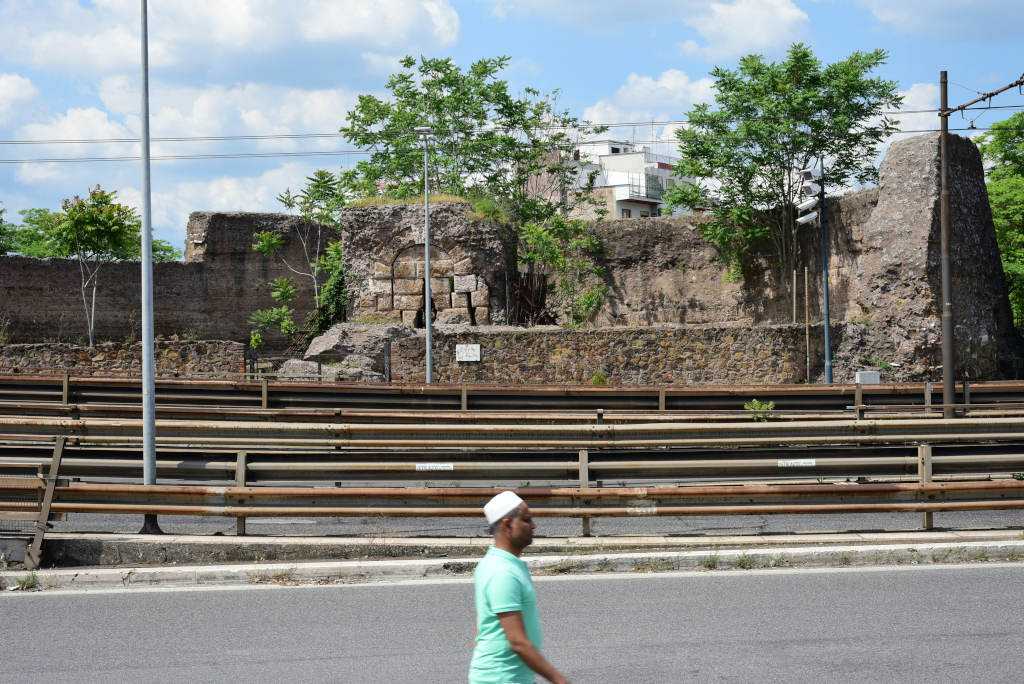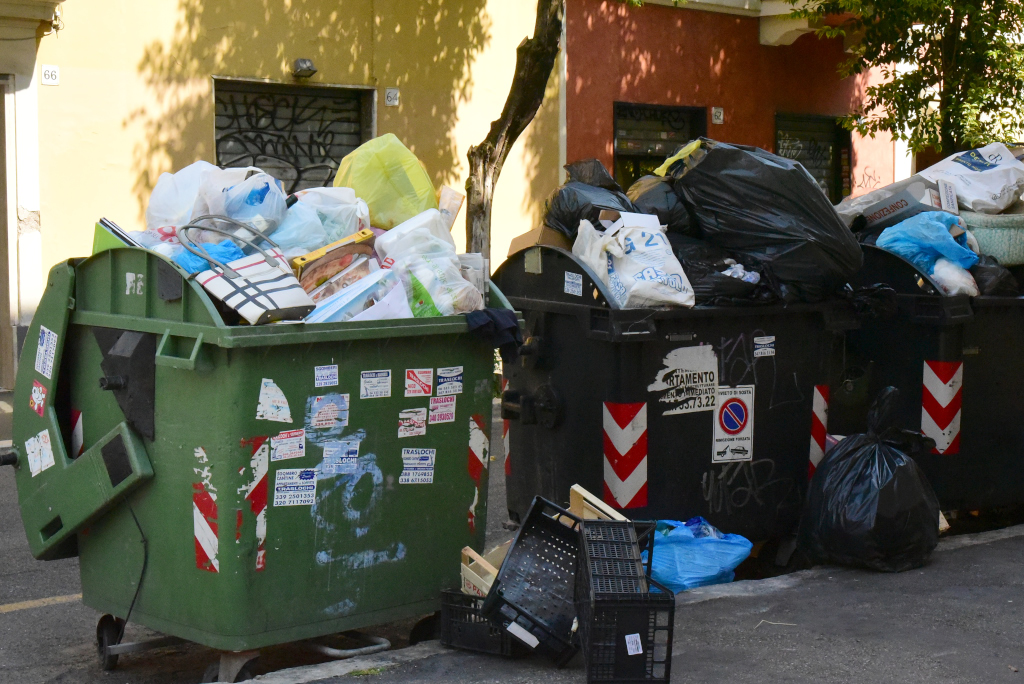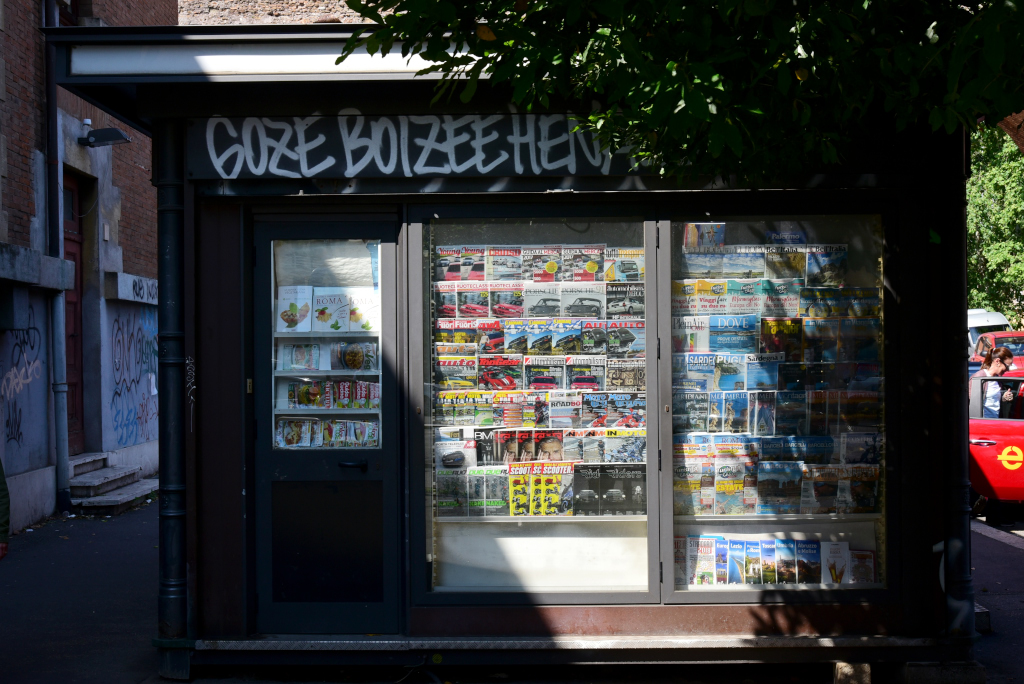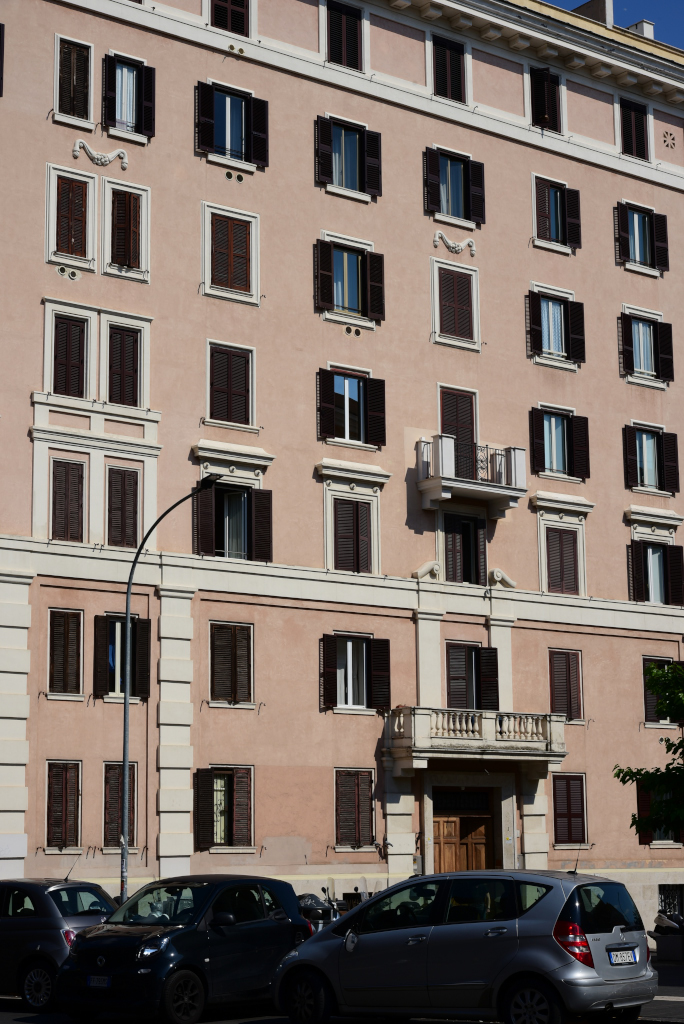May 18th, 2018
I was told that Pigneto was a hip, up-and-coming neighborhood in Rome, but wasn’t very successful in discovering much particularly hip about the neighborhood.Or perhaps Rome is so extravagant in many of its neighborhoods that it leaves the visitor ambivalent to whatever hipster pretensions may prevail here. And it goes without saying that the increasingly fashionable neighborhood is tied to being cleansed of the unsavoury elements in tandem with rising land prices.
The neighborhood still reflects some of its more recent industrial roots, such as former Pantanella pasta factory (now a housing estate) and Serono pharmaceutical factory (now a high-end hotel). Rome’s first horse tram depot was built in 1891 on the Piazza Caballini.
The historic Mercato Casilino is held six mornings every week, supplying fruit and vegetables, fish, meat and homeware. Despite a recent reduction in size, the market still reflects the multicultural, community-based character of Pigneto.
The area is characterized by substantial amount of early 20th century Liberty architecture as well as dramatic murals and graffiti. Traces of ancient Rome can be found in the form of the Sepolcro di Largo Preneste, a funerary building dating back to the 2nd century AD, while Torrione Prenestino is one of Rome’s biggest mausoleums.
Via Montecuccoli appeared in a scene of Roberto Rosselini’s ‘Roma Città Aperta’, a seminal Neorealist film. Pasolini’s ‘Accattone’ was also set in the Bar Necci in the neighborhood, a bar that is still in operation.
Porta Maggiore marks the western corner of Pigneto bordering on San Giovani, built in 52 B.C. to mark the intersection of eight of the 11 aqueducts of ancient Rome.
The focus of the San Giovanni quartiere is the Basilica di San Giovanni in Laterano or Saint John Lateran’s basilica, the ecclesiastical seat of the bishop of Rome, who happens to be the pope.
The church is the oldest and highest ranking of the four papal major basilicas, the oldest public church in the city of Rome, as well as the oldest and most important basilica of the Western world.
In the late Roman Imperial era, the Lateran Palace fell into the hands of Emperor Constantine, then became the residence of Pope St. Silvester I, eventually becoming the Cathedral of Rome, the seat of the Popes and the Bishops of Rome.
Pope Sylvester I presided over the official dedication of the archbasilica and the adjacent Lateran Palace in 324. Pope Sergius III then dedicated the structures to St. John the Baptist in the 10th century in honor of the newly consecrated baptistry of the archbasilica, while Pope Lucius II dedicated them to St. John the Evangelist in the 12th century. Hence St. John the Baptist and St. John the Evangelist are co-patrons of the archbasilica, while the primary Patron is Christ the Savior.
Every pope, beginning with Pope Miltiades, occupied the Lateran Palace until the reign of the French Pope Clement V, who in 1309 transferred the seat of the Papacy to Avignon, a Papal fiefdom that was an enclave in France. The Lateran Palace has also been the site of five ecumenical councils.
During the time the papacy was seated in Avignon, France, the Lateran Palace and the archbasilica deteriorated, and were also ravaged by fire in both 1307 and 1361. When the papacy returned from Avignon and the pope again resided in Rome, the archbasilica and the Lateran Palace were deemed inadequate considering their accumulated damage.
Pope Sixtus V began a program for reconstructing the church, the original Lateran Palace being demolished and replaced with a new edifice.
On the square in front of the Lateran Palace was placed the largest standing obelisk in the world, originally commissioned by the Egyptian Pharaoh Thutmose III and erected by Thutmose IV before the great Karnak temple of Thebes, Egypt.
Further renovation of the basilica occurred under the direction of Francesco Borromini. The twelve niches created by his architectural scheme were eventually filled in 1718 with statues of the apostles, sculpted by the most prominent Roman Rococo sculptors.
(Narrative paraphrased from www.travelmag.com as well as Wikipedia)

